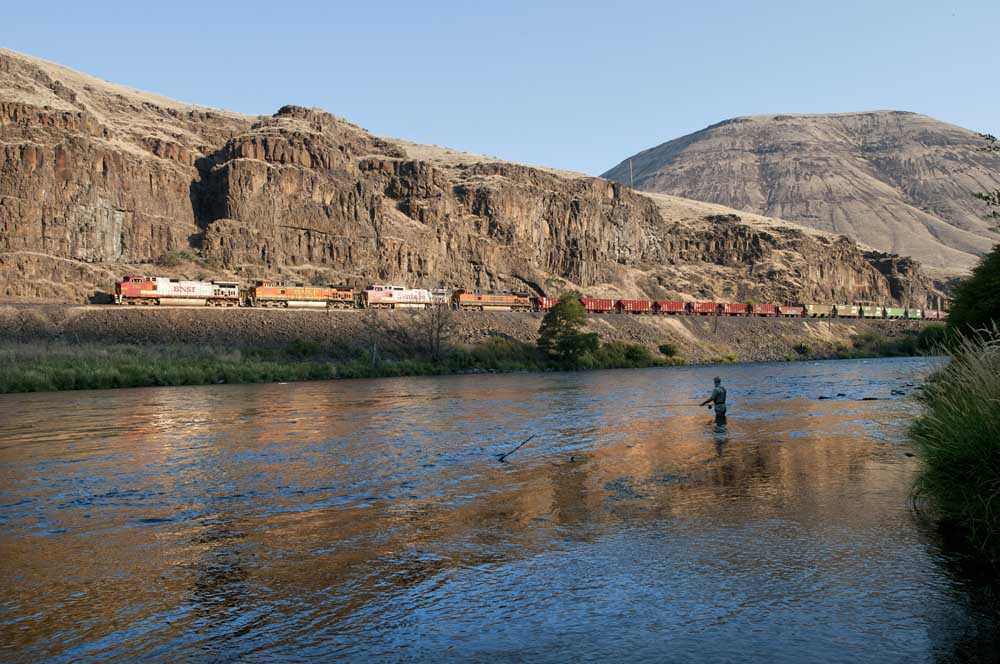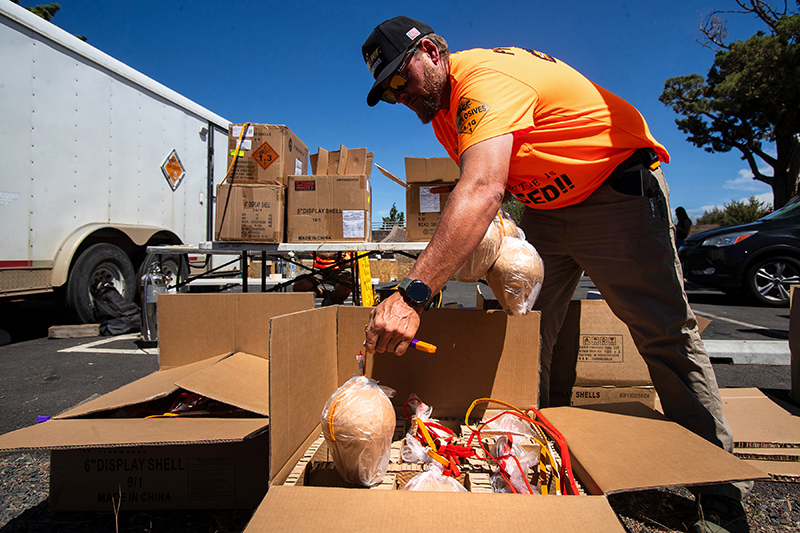Lower Deschutes to remain open for summer steelhead fishing
Published 1:45 pm Friday, August 2, 2024

- A fisherman swings his fly through a run while fishing the Lower Deschutes.
It has been a good year for fish returns in the Columbia River, and the high numbers of summer steelhead passing through Bonneville Dam are enough to keep fishing open on the Lower Deschutes River.
More than 21,000 unmarked summer steelhead have passed through the dam since July 1, according to the Oregon Department of Fish and Wildlife.
The agency has declared this to be the highest run of summer steelhead in nearly 10 years. However, it adds that while high compared to recent years it is still well below the 20-year average, as the upriver summer steelhead run has been at historically low levels for most of the past decade.
In addition to the Lower Deschutes, the John Day, Umatilla, Grand Ronde and Imnaha rivers are also on track to remain open, the agency said.
Fishery closure in 2021
Steelhead fishing was closed on the Lower Deschutes in 2021 for the first time since 1978 due to low returns.
The closure “impacted anglers, guides and local communities who participate in this popular fishery,” said Michelle Dennehy, an ODFW spokesperson. “After that closure, ODFW fish biologists throughout the Columbia and Snake River systems developed frameworks to meet conservation needs and provide transparency on when fishing would be open or closed.”
If wild steelhead passing Bonneville Dam in July exceed 18,700 fish, the fishery is open for the year. When numbers are lower, evaluations occur and the fishery can close if numbers are poor later in the year.
“July is a critical period when we watch total wild fish passing Bonneville, not just Deschutes River fish,” said Jerry George, an ODFW fish biologist. “If it’s a really poor year, it could close early.”
George said habitat restoration work in the Columbia and Deschutes is offering better habitat for fish to spawn and could result in greater numbers of fish returning in the future.
“We are hopeful that a lot of the habitat work will pay dividends here,” said George. “There has been a lot of work done (on) Whychus Creek. Quite a bit of work was done on the Crooked River and McKay Creek by Prineville. We are hopeful that we will see dividends of that work over the next five to 10 years.”Tips for steelhead fishingFishing regulations only allow anglers to keep hatchery steelhead on the Deschutes and in most of Oregon. Hatchery fish have their adipose fin clipped off. Anglers can bring home hatchery steelhead but must release unmarked steelhead. ODFW offers the following tips for anglers in case they need to release a wild steelhead:
• Fish earlier in the day when water temperatures are cooler.
• Land the fish quickly. A fish on the end of the line is under stress, so don’t play the fish to utter exhaustion. Severe exhaustion reduces the fish’s odds of surviving.
• Support the fish when bringing it in. Support the fish underwater in a natural position, handling it as little as possible. Give it time to recover and keep it in the water, it needs all the oxygen it can get from the water passing over its gills.
• Use barbless hooks. Bring the fish quickly within reach. Leave the fish in the water and, without squeezing it, remove the hook carefully with long-nosed pliers or thumb and forefinger. If necessary, cut the leader near the hook, which will dissolve over time. Note barbless hooks are recommended but not required on the Deschutes River.
• Revive the fish before releasing. Point the fish into the current or in standing water, gently move the fish forward until its gills are moving and it maintains its balance on its own. Let the fish swim freely from your hands.
• Use appropriate gear. Use tackle, including line and rod, that are strong enough to bring your fish in quickly and gently.
• When photographing a fish, minimize handling and keep the fish in the water.








